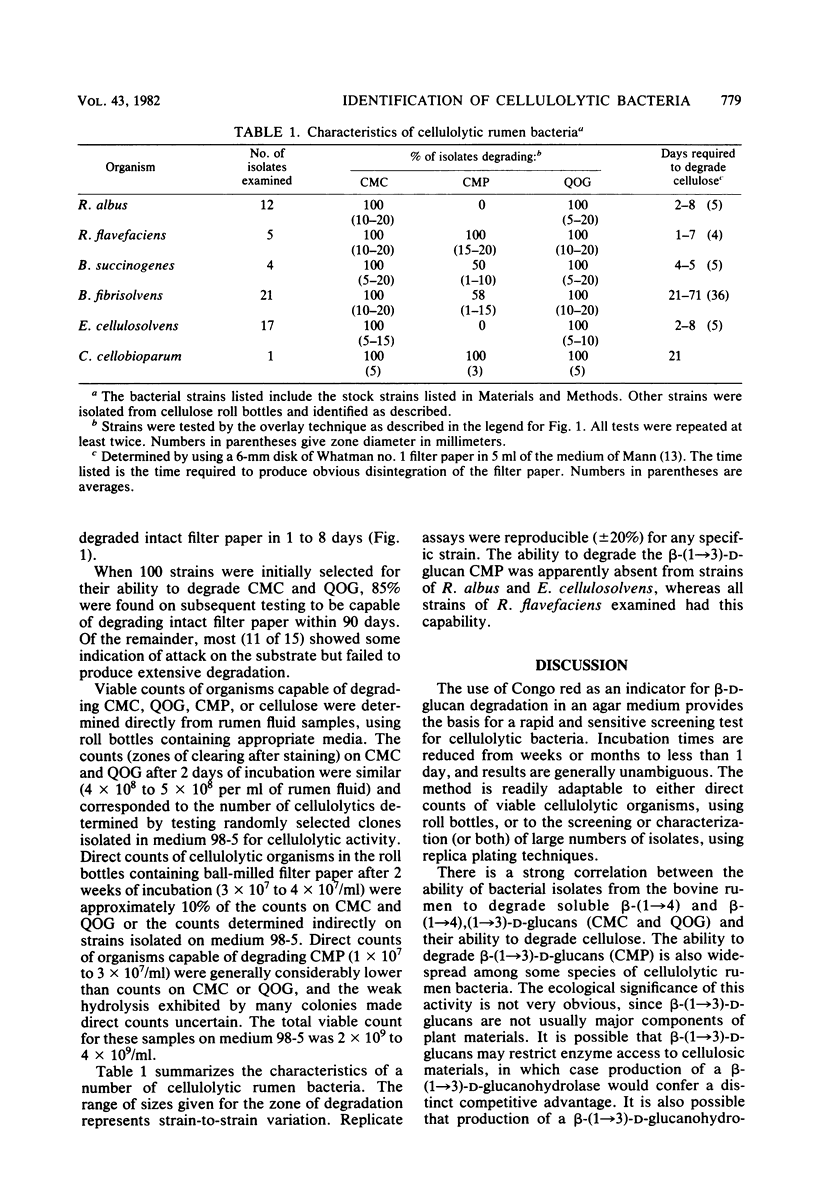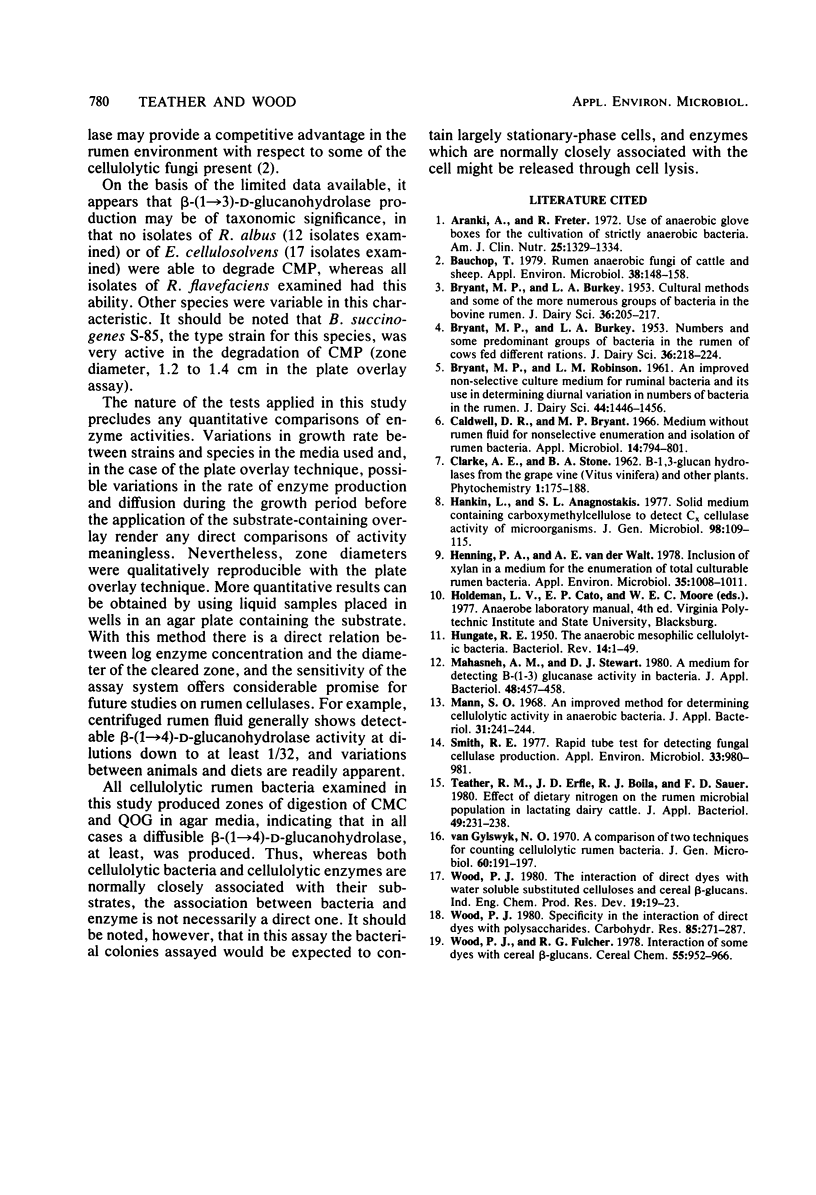Abstract
The interaction of the direct dye Congo red with intact beta-D-glucans provides the basis for a rapid and sensitive assay system for bacterial strains possessing beta-(1 leads to 4),(1 leads to 3)-D-glucanohydrolase, beta-(1 leads to 4)-D-glucanohydrolase, and beta-(1 leads to 3)-D-glucanohydrolase activities. A close correspondence was observed between cellulolytic activity and beta-(1 leads to 4)-D-glucanohydrolase and beta-(1 leads to 4),(1 leads to 3)-D-glucanohydrolase activities in isolates from the bovine rumen. Many of these isolates also possessed beta-(1 leads to 3)-D-glucanohydrolase activity, and this characteristic may have taxonomic significance.
Full text
PDF



Images in this article
Selected References
These references are in PubMed. This may not be the complete list of references from this article.
- Aranki A., Freter R. Use of anaerobic glove boxes for the cultivation of strictly anaerobic bacteria. Am J Clin Nutr. 1972 Dec;25(12):1329–1334. doi: 10.1093/ajcn/25.12.1329. [DOI] [PubMed] [Google Scholar]
- Bauchop T. Rumen anaerobic fungi of cattle and sheep. Appl Environ Microbiol. 1979 Jul;38(1):148–158. doi: 10.1128/aem.38.1.148-158.1979. [DOI] [PMC free article] [PubMed] [Google Scholar]
- Caldwell D. R., Bryant M. P. Medium without rumen fluid for nonselective enumeration and isolation of rumen bacteria. Appl Microbiol. 1966 Sep;14(5):794–801. doi: 10.1128/am.14.5.794-801.1966. [DOI] [PMC free article] [PubMed] [Google Scholar]
- HUNGATE R. E. The anaerobic mesophilic cellulolytic bacteria. Bacteriol Rev. 1950 Mar;14(1):1–49. doi: 10.1128/br.14.1.1-49.1950. [DOI] [PMC free article] [PubMed] [Google Scholar]
- Hankin L., Anagnostakis S. L. Solid media containing carboxymethylcellulose to detect CX cellulose activity of micro-organisms. J Gen Microbiol. 1977 Jan;98(1):109–115. doi: 10.1099/00221287-98-1-109. [DOI] [PubMed] [Google Scholar]
- Henning P. A., van der Walt A. E. Inclusion of xylan in a medium for the enumeration of total culturable rumen bacteria. Appl Environ Microbiol. 1978 Jun;35(6):1008–1011. doi: 10.1128/aem.35.6.1008-1011.1978. [DOI] [PMC free article] [PubMed] [Google Scholar]
- Mann S. O. An improved method for determining celluloytic activity in anerobic bacteria. J Appl Bacteriol. 1968 Jun;31(2):241–244. doi: 10.1111/j.1365-2672.1968.tb00363.x. [DOI] [PubMed] [Google Scholar]
- Smith R. E. Rapid tube test for detecting fungal cellulase production. Appl Environ Microbiol. 1977 Apr;33(4):980–981. doi: 10.1128/aem.33.4.980-981.1977. [DOI] [PMC free article] [PubMed] [Google Scholar]
- Teather R. M., Erfle J. D., Boila R. J., Sauer F. D. Effect of dietary nitrogen on the rumen microbial population in lactating dairy cattle. J Appl Bacteriol. 1980 Oct;49(2):231–238. doi: 10.1111/j.1365-2672.1980.tb05121.x. [DOI] [PubMed] [Google Scholar]
- van Gylswyk N. O. A comparison of two techniques for counting cellulolytic rumen bacteria. J Gen Microbiol. 1970 Feb;60(2):191–197. doi: 10.1099/00221287-60-2-191. [DOI] [PubMed] [Google Scholar]



